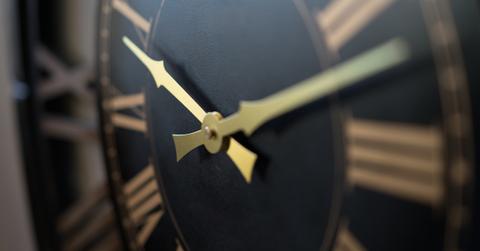What Is the Doomsday Clock, and How Does It Relate to Climate Change? Is It Even Real?
Published Jan. 25 2023, 4:25 p.m. ET

Many of us woke up to headlines this morning about the Doomsday Clock being the closest to midnight it's ever been, and really, were any of us shocked? Midnight, for the record, is the metaphor for annihiliation.
Factors like nuclear warfare and climate change influence the Doomsday Clock — so with the ongoing war in Ukraine as well as extreme weather events across the board, this really comes as no surprise. But is the Doomsday Clock really something we should even take into account?
Not everyone thinks the clock is a realistic depiction of the state of our planet.
"Nuclear war and climate change are two huge, complex topics that the Doomsday Clock has to distil into a single graphic. It’s a lot of heavy lifting for a metaphor born in an era when annual global emissions were just 13 percent of today’s levels and the Intergovernmental Panel on Climate Change didn’t even exist," Matt Reynolds of WIRED explained in the article "Is It Time to Call Time on the Doomsday Clock?"
"Lumping together these two risks — and all the other ways mankind could mess up the planet — blurs the meaning of one of our most powerful symbols," he continued. "Maybe it’s time to wind back the dial on the world’s most famous clock face."
While we're all about curbing climate change to avoid inevitable chaos, this may not really be the right way to measure how much time we have left on Earth.
How does climate change influence the Doomsday Clock?
Climate change is one of many factors that supposedly influences the time on the Doomsday Clock.
According to nonprofit science-based media company, the Bulletin of the Atomic Scientists, the clock is basically a metaphor the publication created to show how close we are to an apocalypse. It was created in 1947 and has since been updated periodically by a board of scientists who work for the magazine. Together, they look at various factors such as technology and climate science.
Obviously, climate change plays a strong role in pushing the clock closer towards our demise. As we know, global warming is expected to end our planet as we know it. Not only does it increase the spread of zoonotic diseases (yes, like COVID-19), but it's also destroying the agriculture industry, causing floods, triggering wildfires and extreme weather events, and more. In a way, it's similar to the NYC Climate Clock.
And things like political unrest and warfare only exacerbate the issue.
The clock was "farthest from midnight" in 1991, meaning the farthest from an apocalypse, after the Cold War ended. The U.S. and Soviet Union had signed the Strategic Arms Reduction Treaty, and not to mention, global emissions were far lower than they are now.
Taking all of this into account, the clock hand was set to 17 minutes to midnight on that day in 1991 — a vast difference from where it is today.
The Doomsday Clock is now the closest to midnight it's been on-record. But is any of it legitimate?
On Tuesday, Jan. 24, the Doomsday clock was set farther ahead than ever, with only 90 seconds to midnight, according to CBC News. This is largely because of the ongoing COVID-19 pandemic, nuclear warfare threats from Russia, and — of course — the climate crisis.
"Russia's thinly veiled threats to use nuclear weapons remind the world that escalation of the conflict by accident, intention or miscalculation is a terrible risk," Rachel Bronson, Bulletin's president stated.
"The possibilities that the conflict could spin out of anyone's control remains high," she continued.
While nuclear warfare and climate change are certainly pushing our planet towards its demise, the concept contains biases and blindspots. And, let's face it, this was created more than 70 years ago, when things were much different. We knew much less back then. Obviously, we don't have a ton of time to save the world, but it doesn't mean it's ending as we speak.
What's important is that we make decisions that will benefit our planet's well-being, and that we keep advocating for policy changes.
We're all about having another outer force that encourages us to push for change, but the time on the Doomsday Clock isn't of our utmost concern. It shouldn't make us feel like we should give up on saving the world — there are many more productive ways to make us, as a society, try harder to do better.